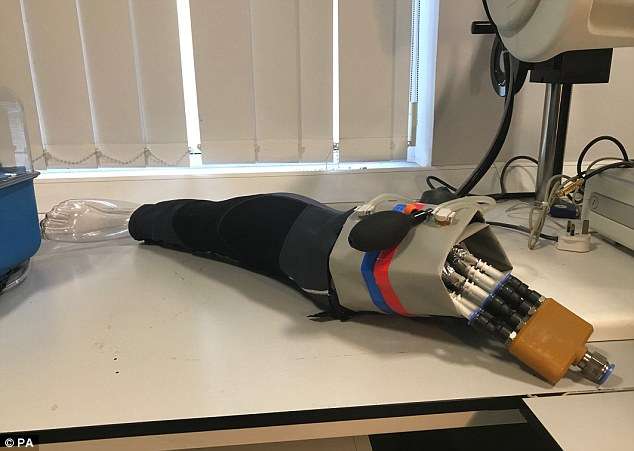The portable system, dubbed a 'life support for limbs', helps save damaged tissue and reduce the need for amputations.
It does this by allowing medics on the battlefield to apply targeted pressure while keeping the limb at a low temperature soon after injury.
The technique has been developed by researchers at the University of Strathclyde in Glasgow and funded by the Defence Science and Technology Laboratory.
It has been created in response to the experiences of military personnel in Iraq and Afghanistan where explosive devices cause traumatic injury.
The first stage of the treatment sees a novel bandage applied to the limb, which applies pressure at different points, reducing pressure and damage to specific areas.
A cooling 'sock' is then wrapped around the tissue to preserve it from further damage until the casualty can be evacuated to a care facility.
Once at a hospital, the limb is then placed inside a protective 'box', which can sustain the area while doctors attempt repairs.
The protective box has specially decontaminated air to reduce infection and continually supplies the affected area with blood.
Following successful trials, the system is set to be available commercially, and could one day form part of the medical kit in every front-line unit.
Professor Terry Gourlay, Head of the Department of Biomedical Engineering at Strathclyde University, said: 'We looked at every stage of the journey an injured soldier follows after an injury to ensure our solution was designed specifically for them.
'The system we have developed is essentially a life-support system for the limb which gives doctors precious time to attempt to repair damage while ensuring the safety of the patient.'
The technology weighs only five kilograms and is specially designed for deployment on operations and use by combat medics.
However, the system could also be used in a non-military setting, for example, natural disasters or remote locations.
Dr Neal Smith, Medical Sciences capability adviser from the Defence Science and Technology Laboratory (Dstl), added: 'While this technique may not be right for every injury, it is a hugely important innovation which could save the limbs of many more of those affected.
'It's a fantastic example of where we work with academics to fund life-changing research which has been turned into a product to improve the quality of life of those injured in service.'
The Daily Mail
More about: LIMBS
















































